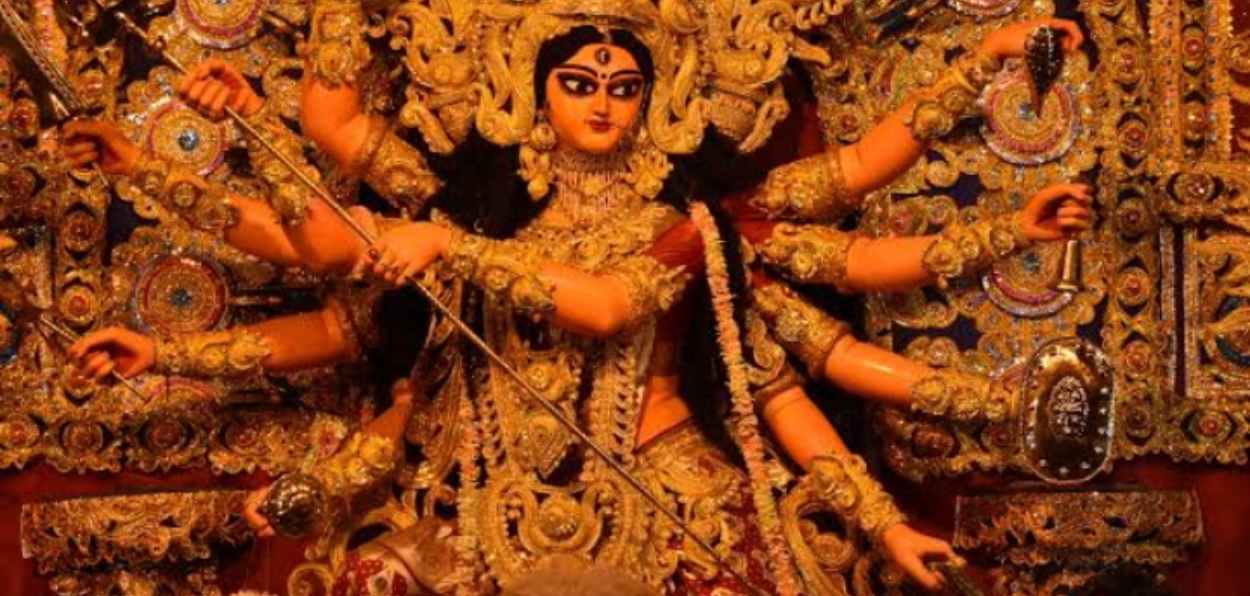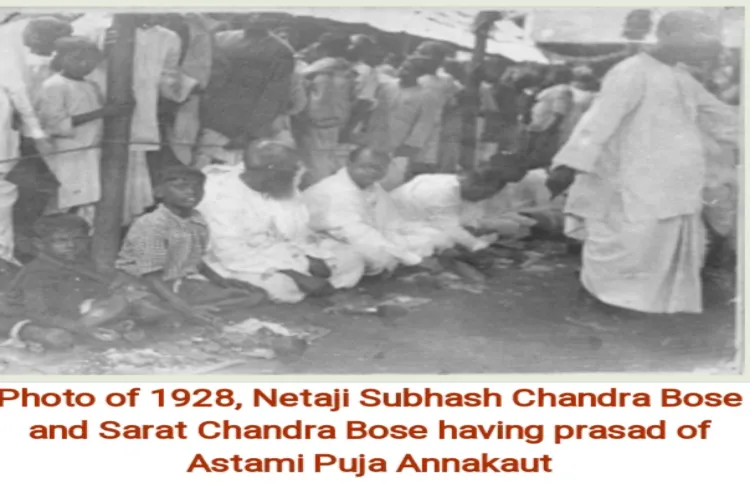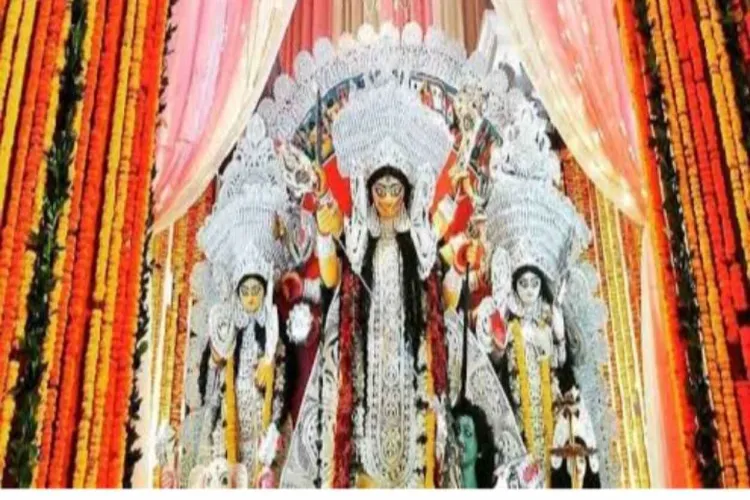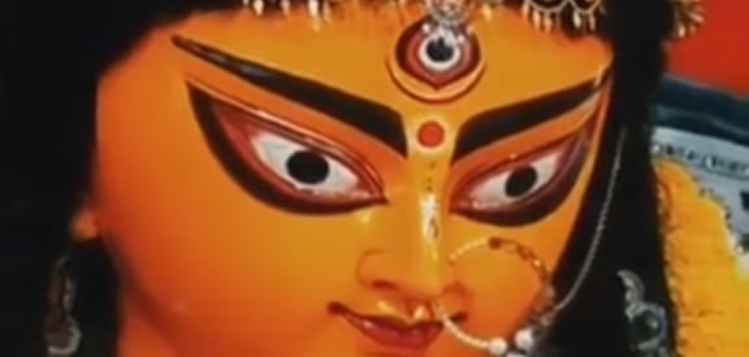
Sumana Mukherjee
The world’s only religious celebration that has no boundaries of religions, castes, and creeds has received unprecedented honour in the form of the UNESCO intangible heritage tag. We are talking about Bengal’s biggest festival-Durga Puja which has inspired generations since the time unknown. The lesser-known fact about the festival is that Netaji Subhash Chandra Bose was the one who initiated the participation of common people in Durga Puja.
He aimed to develop patriotism among the masses in British-governed India. Till then only the royal and feudal families organized the Puja Pandal in their palatial homes
Durga Puja is famed for celebrating the triumph of feminine supremacy to protect the universe from evil. It is an unprecedented act of honouring the strength and courage of women in the form of the Divine mother. Most meaningfully Durga Puja has played a vital role in bridging the gap between different religions, casts, creeds spiritual rituals, and opinions in our society over the centuries.
Foreign invaders, especially British rulers took the unjustified advantage of dividing the nation based on diversity of religion, culture, tradition, and language. It was not only the British rulers who tried to split the natives but it had its roots in the Mughal Era. Unlike his predecessor, Emperor Akbar who introduced an unparalleled policy of religious tolerance, Aurangzeb was intolerant towards the Hindus and the Shia Muslims. He tried to dominate other religions and that caused grievance among the Hindus. Later on, the British could read that the multiplicity of religious faith and language could be used to keep the nation fractured for their benefit.

History depicts Bengal’s experience of going through lots of ups and downs with the rise and fall of Muslim rulers. After the battle of Plassey in 1757 when Nawab Siraz-ud-Daullah was defeated, the Muslim rule came to an end in Bengal. British emperors took over the administration and surprisingly some prominent Hindu families who were downtrodden wanted to rise in power through understanding with the British rulers.
It was the time when the wealthy urban elite class known as Babu was on the rise in Bengal, mainly in Kolkata (then Calcutta). They wanted to attract the limelight by introducing something offbeat in society. This leading class presented Durga Puja as a spectacular celebration.
The oldest Puja mentioned in Kolkata is the family puja of Savarna Chowdhury of Barisha which started in 1610. Following the Savarna family’s tradition, other well-to-do families gradually started Durga Puja in order to receive more acceptance and esteem in society. The Savarna Chowdhury family’s puja has been regarded all over the region for over 400 years. Another famous Durga Puja was established by Raja Nabakrishna Dev of Shovabazar Rajbari (Shovabazar Royal family). His extravagant Durga Puja reigned the ancient city with royal glory. Gradually many elite-class families, traders, and Zamindars started their own Durga Puja in a lavishing style in which the common people were not allowed to participate. They used to watch Durga puja or the royal’s puja from a distance paving the way for social injustice and discrimination.
It was the open and innovative thought of Netaji Subhash Chandra Bose that led to Barwari or Sarbojonin Durga Puja in Kolkata. The word Sarbojonin stands for all in the society. During India’s freedom movement, the acceptance of different religions was strongly felt for the unity of fellow countrymen. Netaji Subhash Chandra Bose being the ultimate philosopher and foreseer, was deeply influenced by Swami Vivekananda’s view to reunite the Indian youth.
British made the strategy of religion-based division of the society that would trigger the communal violence to break the accord and it would have been easier for them to rule the community when they were not united. It was the uniqueness of thought that made Subhash Chandra Bose move much ahead of his time. His god-gifted forethought helped him to think beyond boundaries, he broke the walls of social taboos and called for complete nationalism. The celebration of Durga Puja served as a greater platform for the younger generation of freedom fighters to come in close contact with each other, it was the most astonishing meeting point.

The Durga Puja pandal of Shovabazar Rajbari, Kolkata
Since its existence, for some mysterious reasons, Durga Puja has attracted people from all walks of life and Subhash was an avid admirer of every religious faith. He was greatly influenced by the Vedic teachings of Swami Vivekananda who was a firm believer of secularism. He believed that India could only rise when there would be no discrepancy in the society and the superstitions of religions and the caste system would be completely dissolved. It was not a battle against the invaders but a battle within for the Indians. Subhash, being Swamiji’s follower could understand very well that there was a need to eradicate problems like communal narrow-mindedness, untouchability, and non-cooperation.
While thinking of a platform Subhash decided to involve the commoners from different faiths in Durga Puja which had been an obsession in Bengal. Subhash had the great idea of uniting people through the celebration just the way Bal Gangadhar Tilak, an iconic persona of Indian freedom struggle used popular festivals such as Ganesh Chaturthi to spread the message of Indian nationalism.
Around 115 years ago, residents at 55, Baghbazar Street, North Kolkata’s heritage locality, decided to start the city's first community Durga Puja when a revered family could not continue their family Puja because of financial limitation. It was the united initiative by the residents of Bagbazar that brought the joy of organizing the Durga Puja for all. This traditional festivity was highly expensive and lavish matter which was confined within the Mansions of the elite class in Kolkata. Residents contributed money and continued the Puja on Bagbazar Street. Luckily Deshbandhu Chittoranjan Das the first elected mayor of Calcutta Corporation (now Kolkata) with Subhash Chandra Bose as his chief operating officer both had helped the Bagbazar residents for their exceptional efforts and Subhash wanted to make it a whirling point for the revolutionaries of Bengal.
In 1924, the Puja Committee approached the Mayor for a larger space, and the venue was changed to the intersection of Bagbazar Street and Pashupati Bose Lane. Deshbndhu Chittarnjan and Bose then general secretary of the Congress and CEO of Calcutta Municipal Corporation allotted a space called ‘Metal Yard’ during the Pujas for one month. In 1926, the Puja was officially named Bagbazar Sarbajonin Durgotsav and gradually Metal Yard – a huge park -- became a permanent place for holding the Durga Puja officially since 1928. From 1929 onwards, Bagbazar Sarbojanin started the Swadeshi Mela along with Durga Puja, at Bose's suggestion.

Maa Durga; embodiment of feminine power
Subhash Chandra Bose was the most outstanding President associated with this Puja. In the years 1938-39, Bose glorified this great event as the honorable President of the Puja committee. Respected leaders and prominent personalities like Rabindranath Tagore suggested to Bose that the Muslim community should be actively involved in this Puja and Subhash being the foreseer encouraged people from every belief and class to participate in this Puja. Subhash Chnadra’s dream of uniting the youth of Bengal free from religious boundaries came true.
Baghbazar Sarbojonin Durga Puja from the start itself was the most promising one to bond the nation at the forefront of the hardest-ever struggle for freedom. An astonishing fact was the fishermen and Muslim drivers from the slum areas had always played an important part during the Pujas here and the legacy is continuing. Another integral part of this Puja was the ‘Birashtami Utsav’ held on the day of Mahaashtami Puja. Participants were encouraged to display their proficiency in indigenous sports like bodybuilding, game of sticks, wrestling, duel with swords and knives, etc. These events were used to motivate youths to participate in physical activities which were important then. It is believed that members of the secretive Anushilan Samity used to mingle with the crowd during this occasion.
ALSO READ: Durga Puja: Divine moment of ‘Sandhi Puja’, ‘Pushpanjali’ and traditional ‘Bhog’ of Mahaashtami
Durga Puja, the only religious occasion that has helped people from all walks of life to come in accord by reaching beyond the limitations. In a historical opinion, the High Court of Calcutta (Kolkata) has said that Durga Puja as a festival is not just a religious event but has wider secular connotations as a melting pot of different cultures. Durga Puja is thus a celebration of mankind, togetherness, multiplicity of faiths, social justice, love, and the victory of good over evil. Also, the celebration is a way of paying tribute to our rich heritage.
